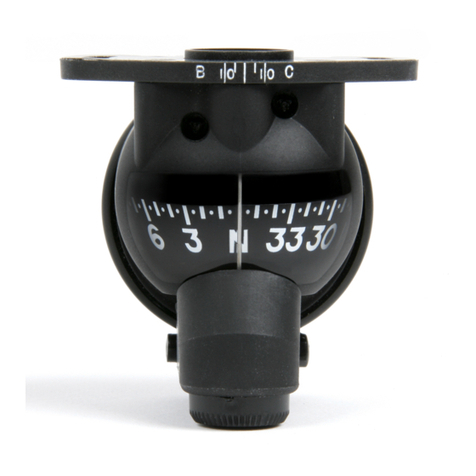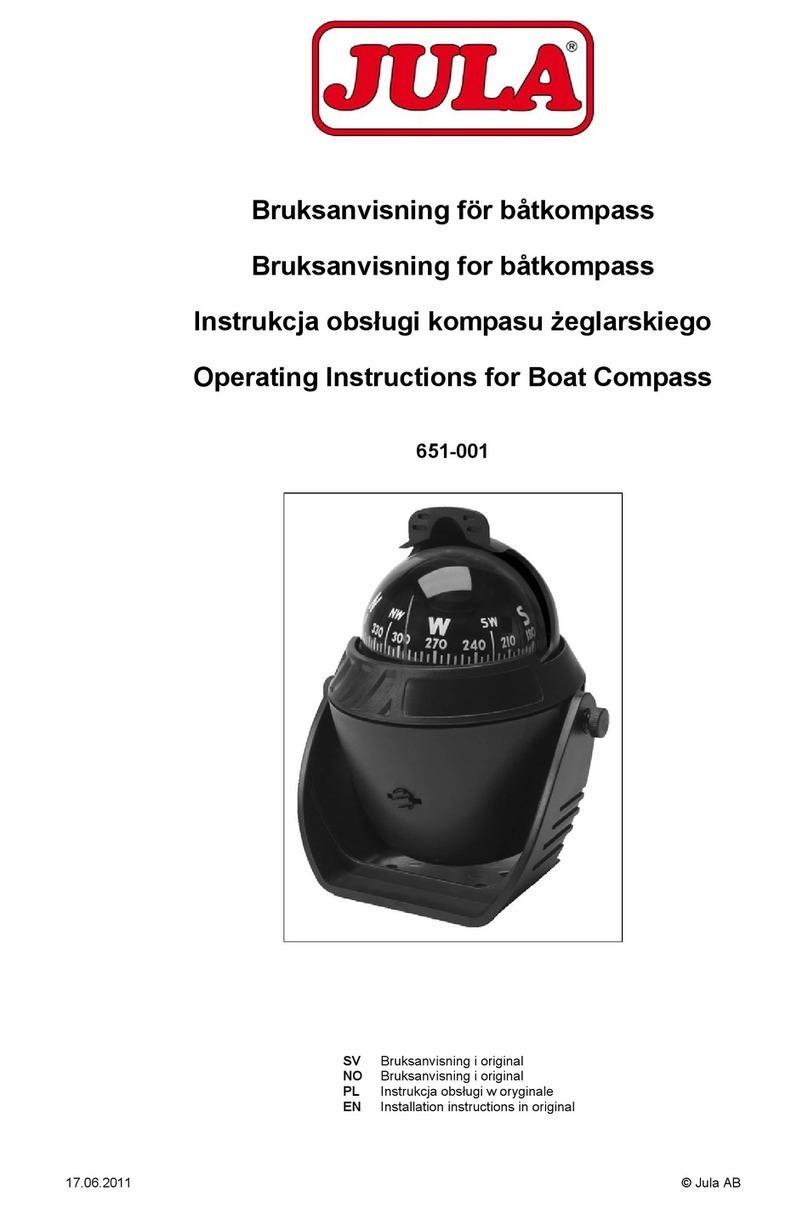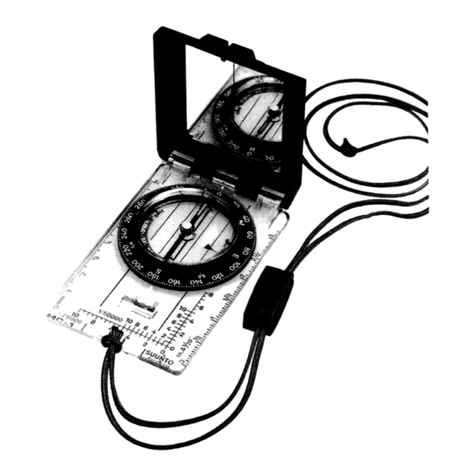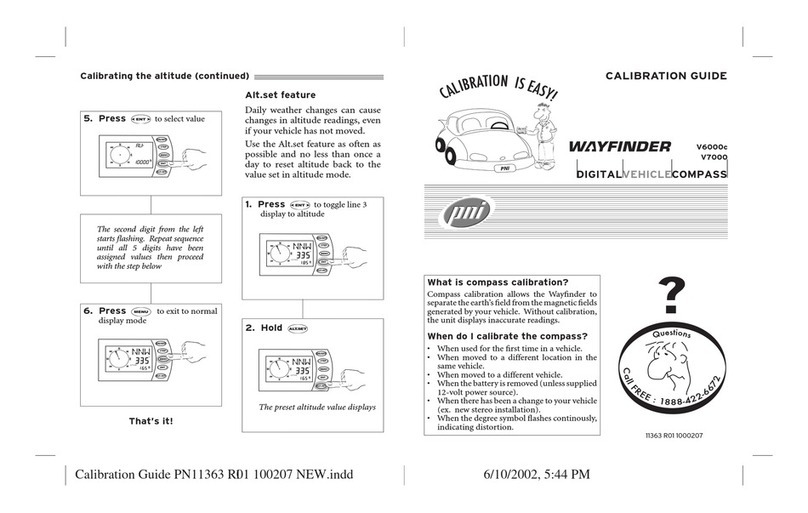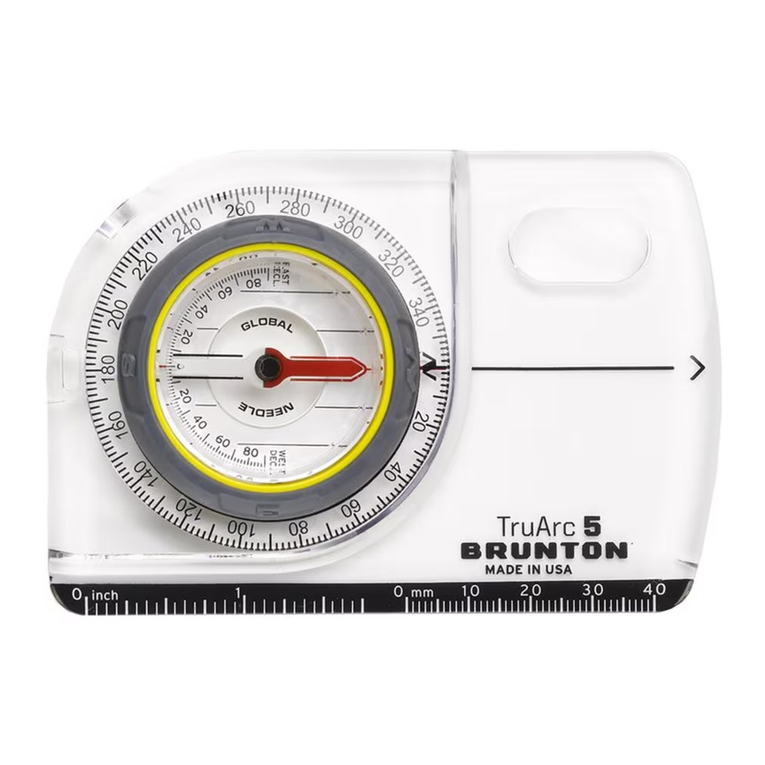SIRS Navigation Pegasus User manual

Page 1
N:\DOCUMENT\Word on the server\Manuals\Pegasus Installation Manual.3.doc Iss:2 21/09/11
THE ‘PEGASUS’ AIRCRAFT COMPASS
From SIRS Navigation Ltd – England.
Installation Instructions
The PEGASUS compass of series PG2* is a precision instrument suitable for installation into Light Aircraft. To obtain the optimum performance you should ensure that you carry out the
following instructions carefully. We advise you to read through these instructions and notes before attempting to mount the unit in your aircraft.
THE COMPASS
The PEGASUS is provided with a compensating system, which will enable you to minimise, the magnetic disturbances created by the mechanical and electrical characteristics of your
aircraft.
The Compass Card is graduated in 5-degree increments with cardinal points at N, S, E & W. Because of the limited space available, the markings between the cardinal points should be
multiplied by a factor of 10. i.e. 3 = 30 degrees, 24 = 240 degrees etc.
Compass magnetic correction can be achieved by using the special key, provided with the unit, and inserting it either of the two holes located on the front face of the compass. Rotation
of the key will provide 30 degrees of compensation for the main cardinal headings. An indication of the correction setting is seen from the top of the compass.
POSITION
The optimum mounting position for the compass is away from other sources of magnetic disturbance. In some aircraft, the position will be pre-determined and the mounting position will
be where the panel mount hole is sited. If the position of the compass is not already fixed, then positions above the instrument panel are generally more suitable for less magnetic
disturbance.
Fig 1
Before finalising the mounting point, it is a good idea to temporarily mount the compass in its intended position and “Swing“ the aircraft to see if the initial deviations are
less than 30 degrees. If the deviation for each cardinal point is less than 30 degrees then proceed with the mounting procedure described below. If the errors are greater than 30
degrees, then try mounting the compass in a more suitable position. If this does not resolve the problem, local de-gaussing may be required to reduce the disturbing magnetic influence.
MOUNTING
1) To mount the unit follow steps 2 to 4
2) Close doors, windows, switch on the engine and accessories which are commonly used such as radio, heater fan etc.
3) Fix the compass in place using 4 screws, ensuring not to over tighten against the front face. The use of an anti-vibration fastener is recommended
4) 4 Clearance Holes of ∅4.1mm are provided for the mounting screws.

Page 2
CORRECTION CARD
ADJUSTING YOUR COMPASS
Before your compass can be adjusted the aircraft must be capable of being aligned to both the East /West axis and North/South axis.
The use an another compass outside the aircraft, to determine the cardinal points is advised.
These following notes should be used for initial installation guidance only, the corrections should be checked by a qualified Compass Adjuster before flying.
CORRECTION EAST/WEST (‘B’ Coefficient)
1) Align your aircraft facing East, insert the Corrector Key provided, into the Left hand hole at the front of the compass, rotate the key in either direction so that the East point is
directly under the Index line.
2) Align your vehicle/aircraft facing west and check that the West Point is under the Index line, Any error may be corrected by readjusting to remove HALF the error shown.
CORRECTION NORTH/SOUTH (‘C’ Coefficient)
1) Align your vehicle/aircraft facing North, insert the Corrector Key into the Right hand hole at the front of the compass, rotate the key in either direction so that the North point is
directly under the Index line.
2) Align your vehicle/aircraft facing South and check that the South point is under the Index Line. Any error may be corrected by readjusting to remove HALF the error shown
.
The above procedures can be repeated until the errors are minimised.
If these adjustments result in consistent errors on each of the Cardinal points the compass may not be aligned correctly on the Fore and Aft directions of the aircraft, to correct this mis-
alignment proceed as follows: -
Fig 2 Fig 3
CORRECTION FOR MIS-ALIGNMENT (‘a’ Coefficient)
Only follow this procedure if the results obtained so far do not meet your
required levels of accuracy.
1) Align the aircraft facing North; record the compass error in Box A.
2) Align the aircraft facing South; record the compass error in Box B.
3) Align the aircraft facing East, record the compass error in Box C.
4) Align the aircraft facing West; record the compass error in Box D.
CORRECTION TABLE
Technical Help can be provided by SIRS Navigation Ltd.
Website: www.sirs.co.uk
BOX Sample Error BOX ACTUAL ERROR
A (NORTH) +15 A
B (SOUTH) +5 B
C(EAST) -10 C
D(WEST) +10 D
E (TOTAL) +20 E
F (“E” / 4) +5 F
SIRS Navigation Ltd
Compass House, Bowes Estate,
Wrotham Road, Meopham,
Kent DA13 0QB
England
Spares:
Please contact us for an up to date leaflet of spares and prices.
Note:
Errors to the Left of the true heading should be prefixed with a plus sign (+). [Fig 2]
Errors to the right of the true reading should be prefixed with a minus sign (-). [Fig 3}
5) Add the readings in Boxes A to D, enter the result in Box E. Divide the figure in Box E by 4,
record the result in Box F, this figure is the error due to mis-alignment and may be corrected.
Correction can be achieved by rotating the front mounting face (in the horizontal plane) of the
compass in the opposite direction to the error, and by the same magnitude. Altering the angle of
the mounting bracket or fitting shims to the rear of the compass mounting face will result in the
rotation of the compass.
In this example the compass body would need to be rotated by -5 degrees
If having carried out these procedures the results are not satisfactory a new
location must be found. Before this can be done, the PEGASUS must be
returned to its ZERO correction status by rotating the correctors using the
special key.
The correction card, supplied with the compass, is designed to be stuck or screwed
to a convenient panel, local to the compass.
Spare compass cards are available as a spare item.
Table of contents
Other SIRS Navigation Compass manuals
Popular Compass manuals by other brands
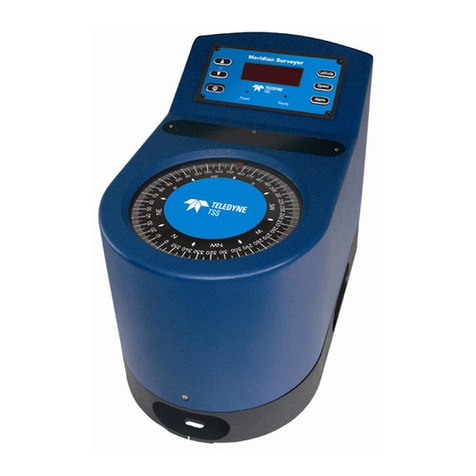
SG Brown
SG Brown Meridian System manual
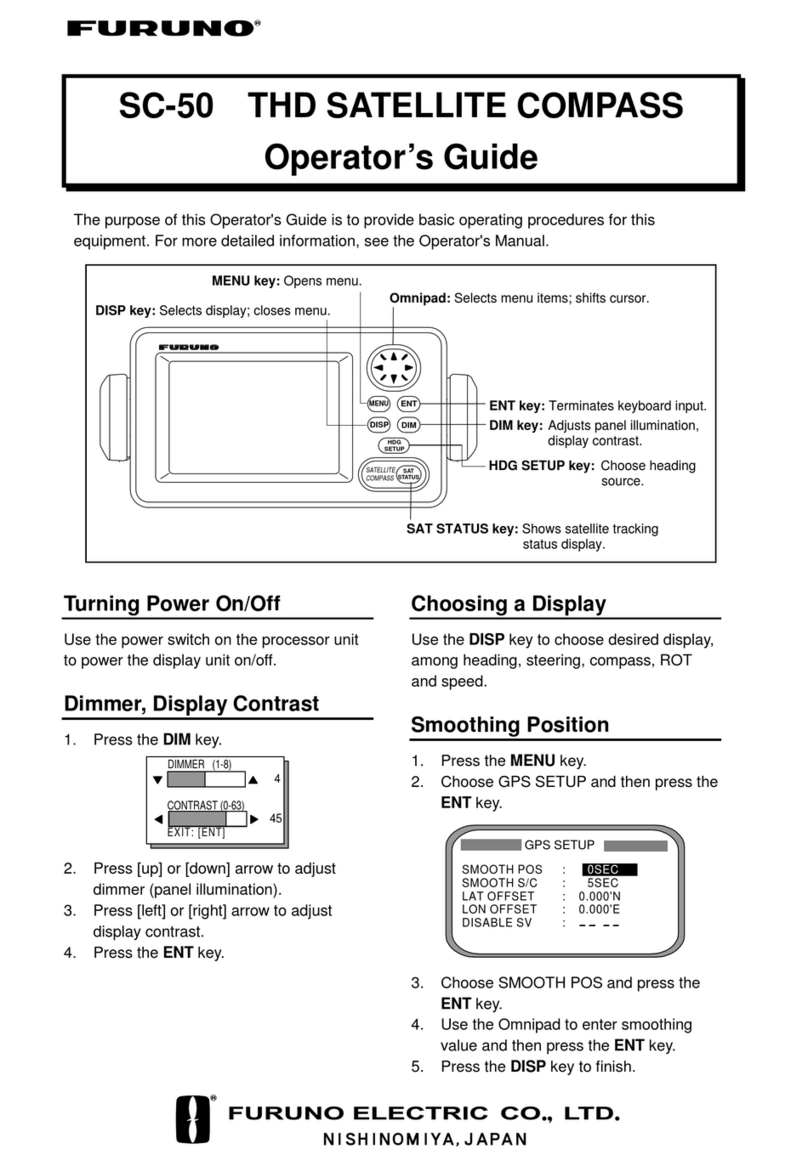
Furuno
Furuno Sc 50 Operator's guide
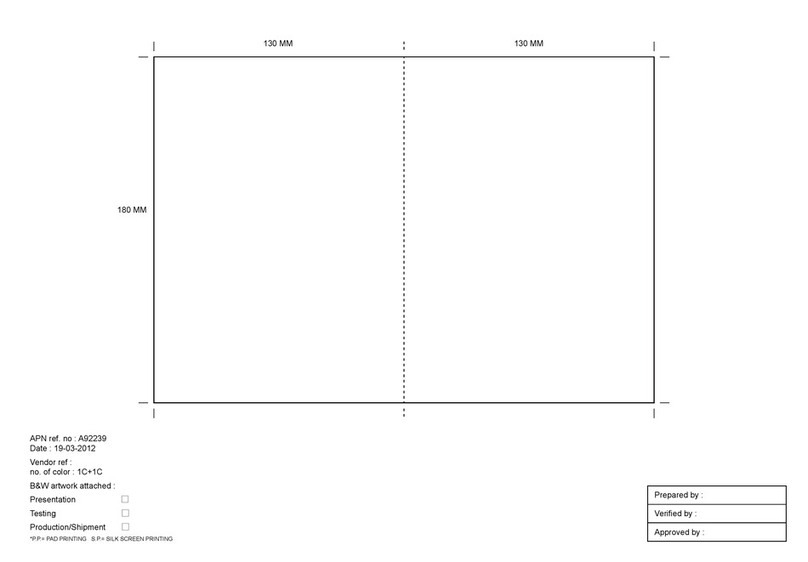
La Crosse Technology
La Crosse Technology Wireless Weather Station instruction manual
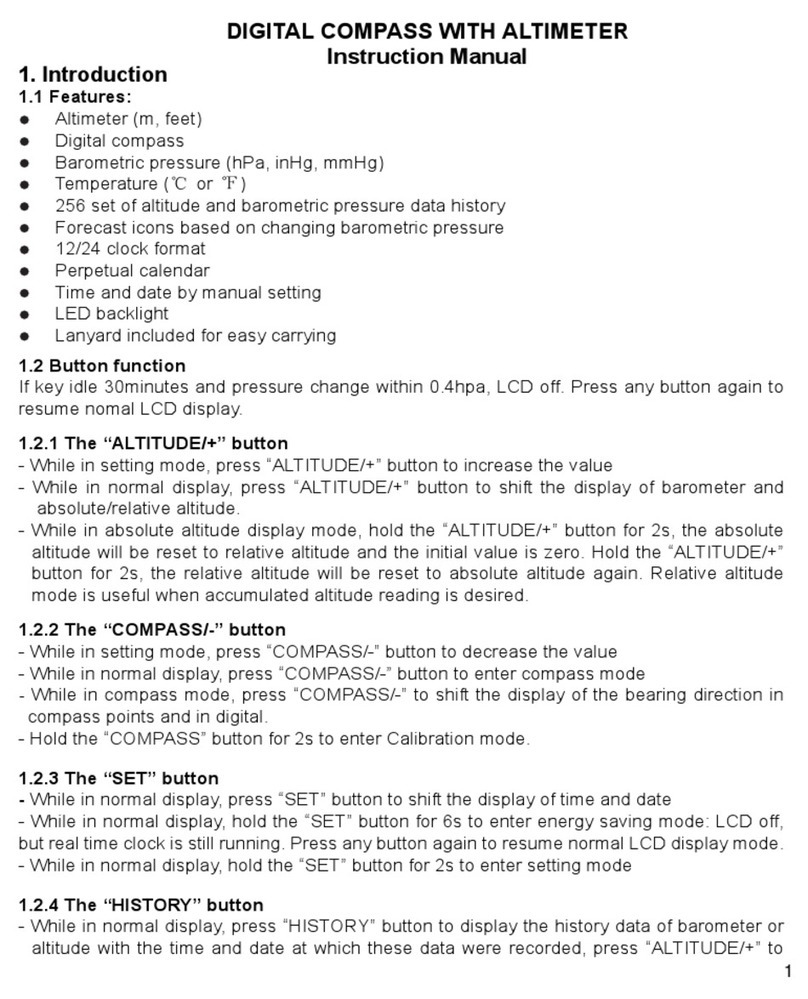
Fine Offset Electronics
Fine Offset Electronics WS110 instruction manual
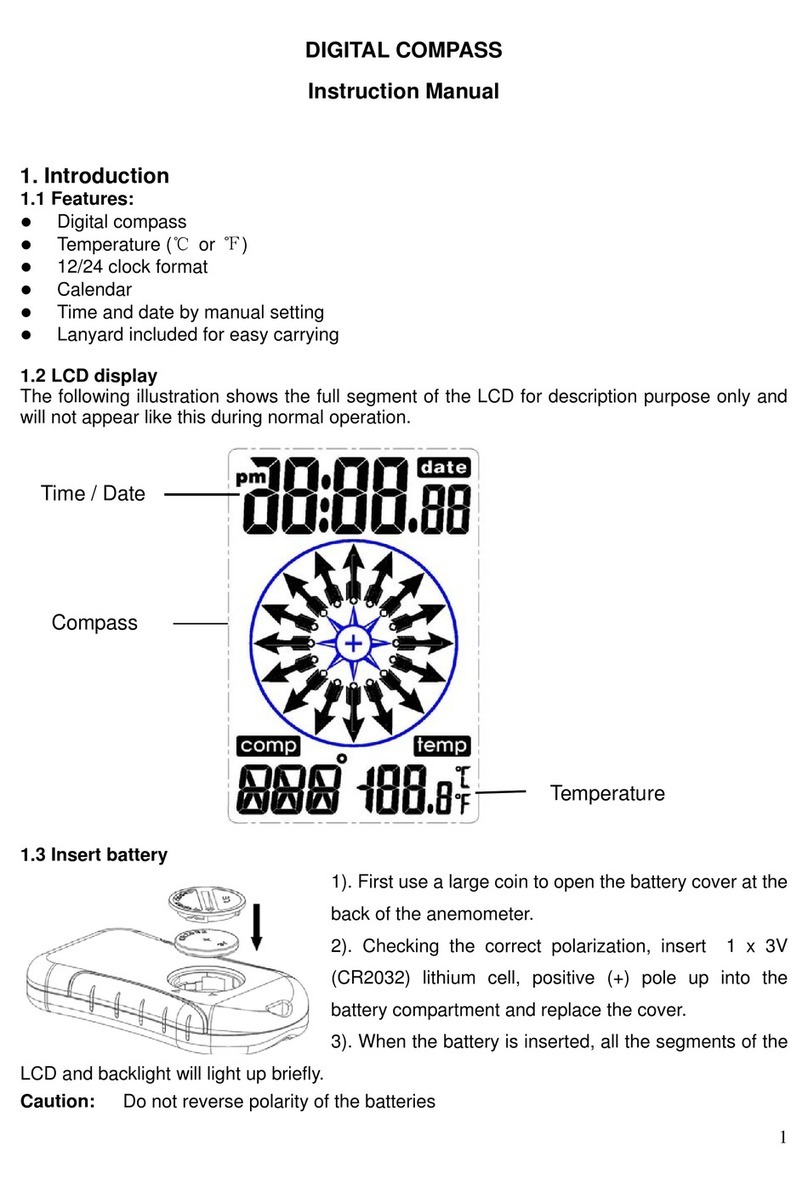
Foshk
Foshk WS112 instruction manual
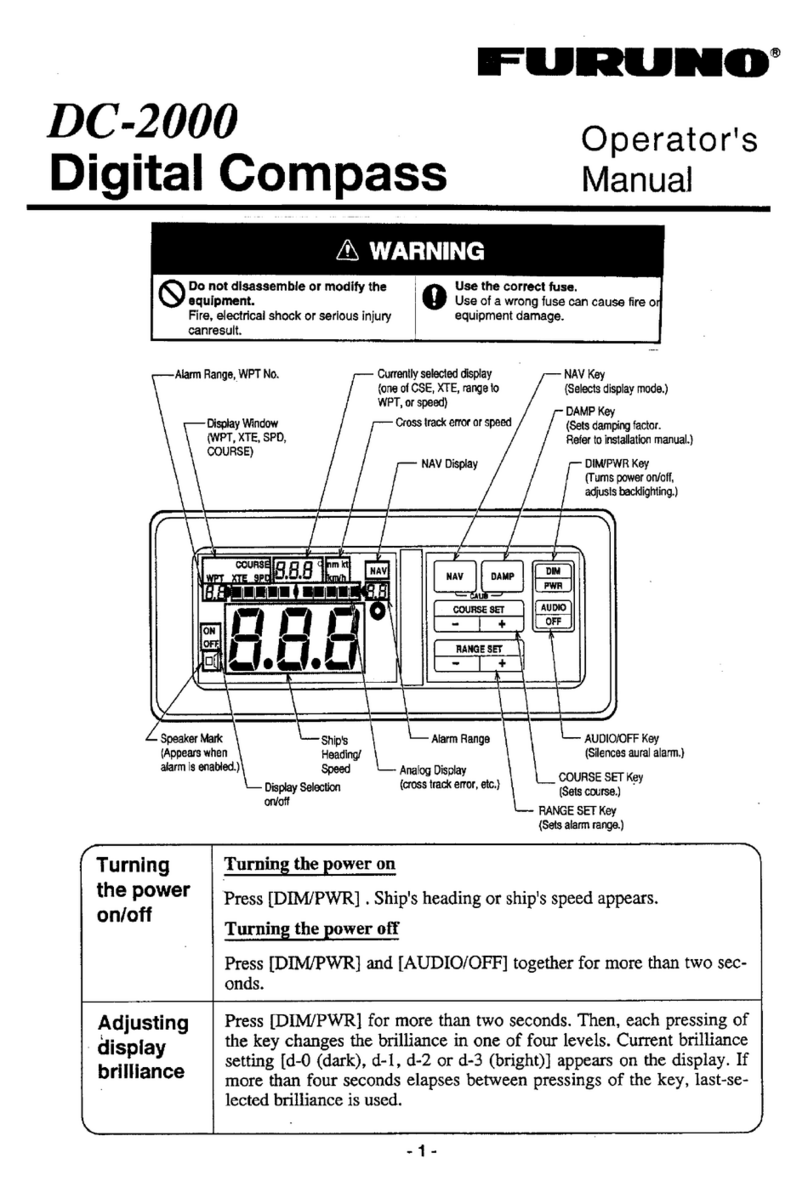
Furuno
Furuno DC-2000 Operator's manual
